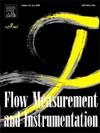Distributed fiber optic warning identification algorithm for oil and gas pipelines based on the Inception-DVS model
IF 2.3
3区 工程技术
Q2 ENGINEERING, MECHANICAL
引用次数: 0
Abstract
The paper propose a new lightweight Inception-DVS model for distributed fiber optic vibration warning of long-distance oil and gas pipelines. This model extends the advantages of the Inception network, designs a new model structure to adapt to complex environments, and effectively reduces the computational load and parameters of the model by optimizing the convolution kernel and hierarchical design. The experimental results show that the model maintains 91 % detection accuracy while the model size is only 3.519 MB and the detection speed reaches 3.2 s, which significantly improves the real-time and efficiency. Compared to traditional models, the Inception DVS model performs well in resource-constrained edge computing environments, accurately identifying multiple pipeline threat events such as manual mining, external intrusion, and vehicle travel, while significantly reducing maintenance costs. In addition, the paper also verified the application of the model in the actual pipeline, and the results show that our model can respond quickly and issue accurate early warnings, effectively reduce the workload of manual inspection, and improve the safety and reliability of pipeline operation.
求助全文
约1分钟内获得全文
求助全文
来源期刊

Flow Measurement and Instrumentation
工程技术-工程:机械
CiteScore
4.30
自引率
13.60%
发文量
123
审稿时长
6 months
期刊介绍:
Flow Measurement and Instrumentation is dedicated to disseminating the latest research results on all aspects of flow measurement, in both closed conduits and open channels. The design of flow measurement systems involves a wide variety of multidisciplinary activities including modelling the flow sensor, the fluid flow and the sensor/fluid interactions through the use of computation techniques; the development of advanced transducer systems and their associated signal processing and the laboratory and field assessment of the overall system under ideal and disturbed conditions.
FMI is the essential forum for critical information exchange, and contributions are particularly encouraged in the following areas of interest:
Modelling: the application of mathematical and computational modelling to the interaction of fluid dynamics with flowmeters, including flowmeter behaviour, improved flowmeter design and installation problems. Application of CAD/CAE techniques to flowmeter modelling are eligible.
Design and development: the detailed design of the flowmeter head and/or signal processing aspects of novel flowmeters. Emphasis is given to papers identifying new sensor configurations, multisensor flow measurement systems, non-intrusive flow metering techniques and the application of microelectronic techniques in smart or intelligent systems.
Calibration techniques: including descriptions of new or existing calibration facilities and techniques, calibration data from different flowmeter types, and calibration intercomparison data from different laboratories.
Installation effect data: dealing with the effects of non-ideal flow conditions on flowmeters. Papers combining a theoretical understanding of flowmeter behaviour with experimental work are particularly welcome.
 求助内容:
求助内容: 应助结果提醒方式:
应助结果提醒方式:


